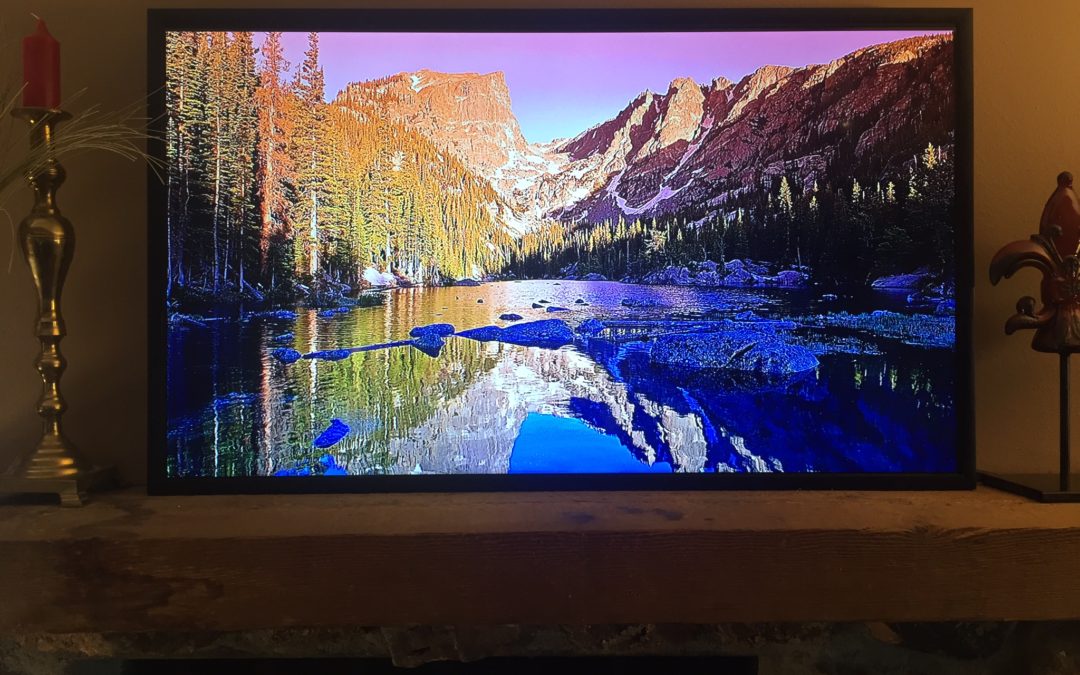Smartphone camera technology has improved significantly, and you don’t have to carry around a point-and-shoot digital camera or a DSLR camera to take great photos for your digital photo frame. DSLR cameras have a learning curve and they are expensive, which is why most people don’t use them anymore. The camera in a smartphone can take really good photos, and with these tips, your photos will be ready to upload to a large digital picture frame.
Angles
Some of the best photographs are taken from weird angles. Taking a photo from a different perspective gives a unique view of the subject and the background. Imagine you are a bird looking down on a subject. That’s a unique perspective that most humans don’t see, and a photo taken from this angle offers a distinction from the typical face-forward shot. The opposite angle would be pointing the camera upwards and shooting up from the ground. Another view is from that of a child. Think about how a small child sees the world. Children see the world differently than adults and taking a photo from their eye-level gives a fresh perspective.

Cleaning
It seems obvious, yet most people don’t clean the camera lens on their smartphones. There is no lens cap to protect the camera’s lens. Think about all the places your phone lives – on tables, in bags, in pockets, etc. The dirt and oils on your hands cause build-up on the camera lens. This build-up will lead to blurry and hazy photos that cannot be fixed by a photo editor. Get a lens cloth and some cleaner and wipe the lens before taking any photos. If you wear glasses, the lens cloth and liquid cleaner that came with your glasses will work well. In a pinch, use your t-shirt to clean the camera lens.
Filters
Instagram is famous for its filters, which provides many options to create some cool effects on the image. However, now that everyone uses the preset filters, it’s not as cool anymore. Instead, try using a photo editing app such as Adobe Photoshop Express which is much more versatile and robust than the simple filters that come with smartphones.
Flash
The best smartphone photos are taken without the flash. A smartphone light is an LED, and it is located right on top of the camera lens, which means the camera will take a blurry photo with an oddly lit subject. To find a light source, you may have to wait for the right lighting opportunity. For nighttime or dark room shots, you can use a car’s headlights, street lights, candlelight from a table, or a flashlight to light up the subject. The best light source is always natural light; artificial light can make the subject appear artificial.
 Gridlines
Gridlines
Turn on the gridlines feature on the camera app, if available. Gridlines are essential to help balance the subject with the overall picture. The gridlines are designed to help you compose the photo into thirds, both vertically and horizontally. The rule of thirds means that the subject is lined up with a point of intersection. This shooting strategy will balance the subject with the background and is more appealing to the eye.
Horizontal-ness
Humans see things horizontally not vertically, and yet we take smartphone photos from a vertical perspective. We tend to snap a picture with the phone in a vertical position because that’s how we use the phone. However, the internet is a horizontal medium. You want to upload your photos to a digital wall frame that is horizontally positioned, and so your digital photos should be taken in a horizontal format. When you take a digital photo, turn your smartphone on its side and position the subject so that it takes up the entire screen.
Proximity
Using the digital zoom on a smartphone camera is convenient, however, the final photo will be slightly blurry and the fine details will be lost. Get closer to the subject, don’t use the digital zoom, and take the photo. This practice significantly improves the quality of the photograph. After the photo is taken, you can use the phone’s editing features to zoom in on the subject.
Shutter
Did you know that the button to raise the volume is also a camera shutter? Turn your smartphone on its side and hit the volume up button to take a picture. Using the volume up button as a shutter means your camera is less likely to jiggle and you don’t have to rely on the finger on your other hand to push the screen shutter button. Using the screen shutter button often puts your subject out of balance and may create a blurry image.
Smartphone cameras are a great alternative to DSLR cameras, and they are definitely more convenient since you already carry a phone everywhere you go. Make the most of your phone’s camera app by using these tips to take better photos that can be uploaded to your digital picture frame. All your friends and family will marvel at your excellent photography skills.
Picture Size
You can manage the settings on your camera app on your smartphone and choose the resolution and size of your photos. To avoid unnecessary editing on each picture you upload to nimbusframe.com, choose 16:9 Resolution to fit your Nimbus Frame perfectly. There is a setting for the Rear camera as well as for selfies on the front camera.

